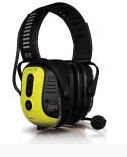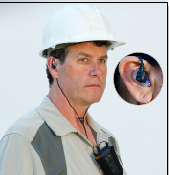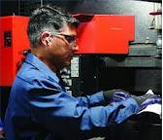Noise and Hearing Loss Prevention
Loud noise can damage hearing or cause permanent hearing loss. Dangerous noise levels can be found in workplaces such as industrial, commercial and retail and recreational settings like restaurants, stadiums, and clubs; in the classroom; or even on our own personal audio devices.

What is a safe noise level?
We record noise levels in decibels, or dBA. The higher the noise level, the louder the noise.
You can listen to sounds at 70 dBA or lower for as long as you want. Sounds at 85 dBA can lead to hearing loss if you listen to them for more than 8 hours at a time. For personal listening devices, the World Health Organization (WHO) recommends a volume of no more than 80 dBA for adults and 75 dBA for children.
WHO Standard for Safe Listening

ASHA Resources for Hearing Loss Prevention
How ASHA Promotes Hearing Health
Besides the resources above, ASHA is very active in promoting hearing health and raising the profile of hearing issues on many domestic and international fronts.
Domestically:
- From the first days of digital media, ASHA has been a national leader raising concerns about the potential impact of unhealthy personal audio device use. For a decade, ASHA’s Listen to Your Buds campaign put on “safe listening concerts” in schools nationwide to educate children about hearing health.
- ASHA’s Healthy Communication & Popular Technology Initiative focuses on raising public awareness about the importance of healthy usage of personal audio devices.
- Launched in 2013, ASHA’s Identify the Signs campaign is dedicated to educating the public about the warning signs of communication disorders and the importance of acting quickly at the first sign of trouble.
- In 2011, ASHA partnered with AARP in assessing the hearing health of its members; polling indicated a significant degree of untreated hearing loss and led to ASHA’s Speak Up for Hearing Loss national campaign that encouraged people to seek professional guidance and help with hearing care.
Internationally:
- At WHO’s request, ASHA serves as an ongoing advisor on the Make Listening Safe campaign, a WHO initiative that produced the first global standard for safe listening on personal devices.
- ASHA is a member of the World Hearing Forum, a WHO-established global network of stakeholders dedicated to promoting ear and hearing care worldwide.
- Through a digital campaign, ASHA participates annually in World Hearing Day (March 3), raising awareness and educating the public about hearing-related issues.
- ASHA is a founder of the International Communication Project, which is dedicated to raising the profile of communication disorders with global policymakers.
To learn more about hearing protection and hearing conservation check out our resources:
Custom Protect Ear Hearing Resources
NOISE-RELATED HEARING LOSS VIDEO (See below)
SOURCE
https://www.asha.org/public/hearing/Noise-and-Hearing-Loss-Prevention/
 Action to Assessing the effectiveness of your plan and on to becoming an Advocate for hearing conservation.
Action to Assessing the effectiveness of your plan and on to becoming an Advocate for hearing conservation. Noise Controlled Work Environment – What changes can be made to the workplace environment to reduce the noise exposure levels. Can physical barriers be erected between the source of the noise and the worker? What sound reduction devices can be added to the machinery/ tools/ vehicles or equipment that is the source of the noise? What new or better equipment or facilities will accommodate better hearing protections.
Noise Controlled Work Environment – What changes can be made to the workplace environment to reduce the noise exposure levels. Can physical barriers be erected between the source of the noise and the worker? What sound reduction devices can be added to the machinery/ tools/ vehicles or equipment that is the source of the noise? What new or better equipment or facilities will accommodate better hearing protections.









